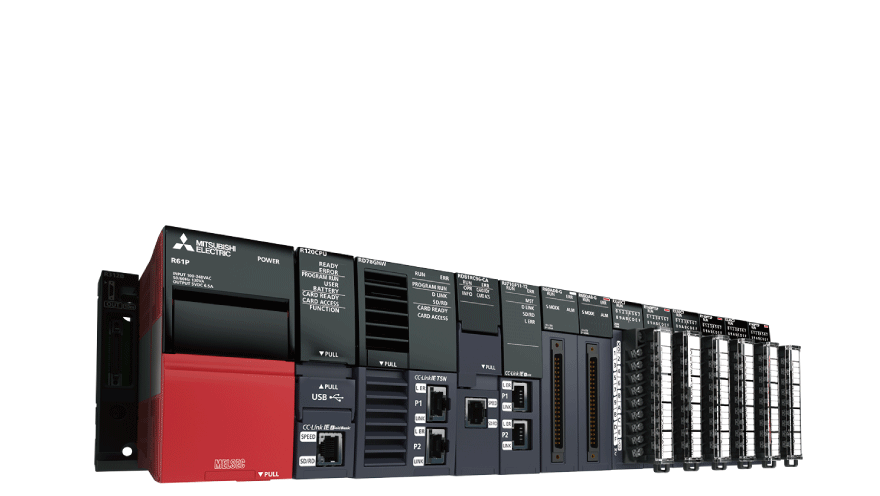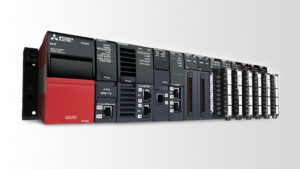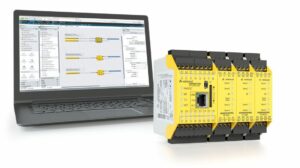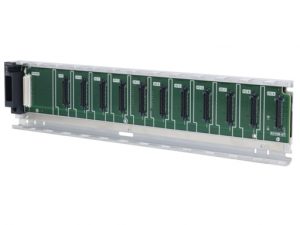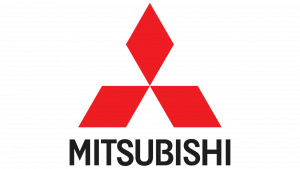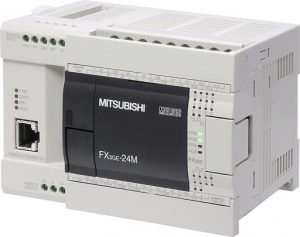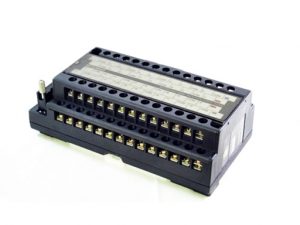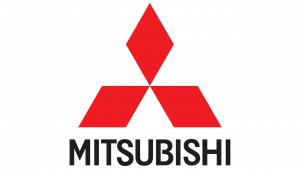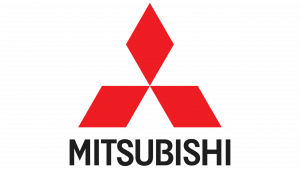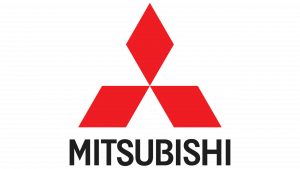The Mitsubishi iQ Series represents the cutting edge of industrial control systems, combining the functionality of PLCs, motion controllers, CNCs, and HMIs into one unified…
The Mitsubishi iQ Series represents the cutting edge of industrial control systems, combining the functionality of PLCs, motion controllers, CNCs, and HMIs into one unified platform. Designed for high-end, complex tasks and automation solutions, the iQ Series delivers ultra-fast processing, real-time feedback control, and seamless communication across machines and networks. Its powerful architecture supports advanced functions such as complex processes, control program debugging, and accurate control for precision-driven industries like automotive, pharmaceuticals, and electronics. Housed in a robust control cabinet, the iQ Series thrives in harsh environments while enabling centralized control of external devices via high-speed communications interfaces. Supporting IEC 61131-3 programming—including structured text, ladder diagrams, and function blocks—the iQ Series ensures efficient adaptation of control logic across both discrete and continuous control programs. It’s Mitsubishi’s flagship platform for next-gen automation.
Key Features:
- High-Speed Processing: Ultra-fast execution for precision control and real-time operations.
- Modular & Scalable Design: Easily expandable with various I/O, motion, and communication modules.
- Advanced Networking: Supports Ethernet, CC-Link, Modbus, and other industrial protocols.
- Multi-CPU Capability: Allows distributed control for optimized system performance.
- Integrated Motion & Process Control: Ideal for robotics, CNC, and large-scale automation.
- Robust & Reliable: Engineered for continuous operation in industrial environments.
Applications:
- Factory Automation: Production lines, robotic systems, and high-speed conveyors.
- Process Control: Chemical, pharmaceutical, and food manufacturing industries.
- Energy & Infrastructure: Power distribution, renewable energy control, and smart grids.
- Precision Machine Control: CNC, servo-driven systems, and multi-axis motion applications.
History and Evolution of PLCs
Early Development and Adoption
Programmable Logic Controllers (PLCs) were first introduced in the late 1960s to address the growing complexity and inflexibility of relay-based control systems in the automotive industry. The first PLCs replaced thousands of hardwired relays with programmable digital systems, dramatically reducing space and maintenance time. These early systems were primarily used for discrete control applications, such as assembly lines and packaging systems.
Transition to Modern PLC Systems
As industries evolved, so did PLCs. Modern PLCs now support analog control, high-speed processing, networking, and integration with SCADA systems. Over time, manufacturers like Mitsubishi have introduced advanced series such as the FX series , Alpha Series, Q-Series, and iQ-R series, which offer compact designs, built-in safety features, and compatibility with IIoT environments.
Components of a PLC
Input Relays
Input relays (also known as input modules) interface with field devices like sensors and switches. They receive digital or analog signals and convert them into electrical signals for the CPU to process. In systems like the Mitsubishi FX5U PLC, digital and analog input options are available for versatile control.
Internal Utility Relays
Internal utility relays are memory bits used for internal logic operations. They do not physically switch outputs but serve as placeholders for decision-making in PLC programming. These are crucial in developing ladder logic diagrams and sequential processes.
Counters and Timers
PLCs come with built-in timers and counters that help manage delays and count occurrences of input signals. Timers can be on-delay, off-delay, or retentive, while counters include up, down, and high-speed variants, allowing precise control in automation sequences.
Data Storage Units
Data registers in a PLC store process variables, operational parameters, and other important data. Mitsubishi PLCs use a variety of data types and address ranges, providing robust data management for both real-time control and long-term trends.
Types of PLCs
Fixed/Compact PLCs
Fixed or compact PLCs integrate all components, including CPU, power supply, and I/O, into a single housing. They are ideal for smaller applications and are cost-effective. The Mitsubishi FX series is a popular example, offering scalable features without requiring expansion modules.
Modular PLCs
Modular PLCs allow users to add or remove I/O, communication, and special function modules as needed. These are suited for complex automation systems requiring flexibility and expansion. Mitsubishi’s iQ-R series exemplifies this approach, with powerful processing capabilities and customizable configurations.
PLC Programming Languages
Ladder Diagrams
Ladder Logic is the most widely used PLC programming language. It visually mimics relay logic diagrams and is intuitive for electricians and engineers. It’s especially common in discrete control applications and is supported across all Mitsubishi PLCs.
Sequential Function Charts
Sequential Function Charts (SFCs) represent control processes as a series of steps and transitions. This language is ideal for batch processes, complex sequences, and multi-tasking operations.
Instruction List
Instruction List (IL) is a low-level textual language, resembling assembly code. Though now deprecated in some standards, it was once widely used for its speed and simplicity.
Structured Text
Structured Text (ST) resembles high-level programming languages and is ideal for complex algorithms and data manipulation. Mitsubishi’s GX Works3 software supports ST for advanced control logic development.
PLCs in Industrial Automation
Discrete Control Applications
PLCs excel in discrete control environments such as machine guarding, conveyor belts, and robotic cells. They monitor digital inputs and control digital outputs with high precision and reliability.
Continuous Control Applications
For continuous processes like chemical mixing or temperature regulation, PLCs with analog input/output modules are used. These setups require more nuanced control and data handling.
Integration with SCADA and HMI Systems
Modern PLCs are fully compatible with SCADA (Supervisory Control and Data Acquisition) and HMI (Human-Machine Interface) systems. This integration provides real-time monitoring, historical data logging, and remote access. Mitsubishi PLCs offer seamless SCADA integration via Ethernet/IP and Modbus TCP protocols.
PLC systems are now essential across a wide range of industrial applications and industrial environments. They are used in aerospace for precision control in component testing and simulation systems. In agriculture, PLCs manage irrigation systems, grain processing, and climate control in greenhouses. The automotive industry, especially in assembly lines, depends heavily on PLCs for robotic welding, painting, and material handling. In aviation, they are involved in ground support systems and baggage handling automation.
Battery manufacturing relies on PLCs for energy management and safe production sequences. In the food and beverage industry, PLCs ensure hygienic processing, bottling, and packaging. Mechanical engineering uses PLCs for equipment diagnostics and performance testing. Mining operations implement PLCs for conveyor systems, drilling, and material transport. In packaging facilities, PLCs enable high-speed labeling, sealing, and inspection.
Pharmaceutical manufacturing uses PLCs for controlled environments, precise dosing, and compliance with strict regulatory standards. In robotics and automation, PLCs coordinate multi-axis motion and sensor feedback loops. Textile factories utilize PLCs for automated looms and fabric inspection, while wood processing plants use them for cutting, drying, and shaping wood with minimal waste.
Advanced Features of Modern PLCs
Redundancy Systems
To ensure uptime in critical applications, some PLCs include redundancy features. These systems have backup CPUs or power supplies that automatically take over in the event of a failure.
Motion Control
Advanced PLCs support motion control for servo motors and stepper motors. This is crucial in CNC machines, robotics, and high-speed packaging lines. Mitsubishi’s iQ Motion series specializes in synchronized, high-precision motion control.
Integration with IIoT
Industrial Internet of Things (IIoT) capabilities are now standard in many PLCs. These include real-time data sharing, cloud connectivity, and predictive maintenance. Mitsubishi PLCs support IIoT protocols and can transmit data to dashboards and cloud services.
Selecting and Programming PLCs
Key Considerations for Selection
When selecting a PLC, consider application size, required I/O count, communication protocols, and environmental factors. Mitsubishi PLCs are available in models suited for everything from simple machines to large industrial networks.
Best Practices in Programming
Follow structured programming techniques, use clear variable names, comment generously, and simulate programs before deployment. Tools like Mitsubishi GX Works3 provide debugging, simulation, and version control for safe deployment.
Additional Information
In industrial control systems, PLCs serve as the brains behind a wide range of automation tasks, from managing input devices like sensors and switches to generating the appropriate output signal to actuators, relays, or indicators. The system receives user input through HMIs or field interfaces, processes the logic, and triggers responses via the output sections based on real-time data and predefined programs.
One of the key considerations in modern factory setups is the comparison between a PLC vs safety PLC. While a standard PLC controls machine functions, a safety PLC includes redundant processing and meets safety integrity level (SIL) certifications, making it ideal for critical applications involving human interaction or high-risk machinery. For further information, you can read our blog “How to choose the right PLC”.
PLCs are also fundamental in process control, especially in industries like chemical manufacturing, water treatment, and food production, where variables like flow, temperature, and pressure must be continuously monitored and adjusted. The flexibility of PLCs allows them to adapt to a variety of automation solutions, making them suitable for small-scale machines or entire production lines.
Modern programming devices, such as laptops running software like GX Works3, allow engineers to configure, simulate, and debug PLC programs. These PLCs often include advanced communication interfaces, such as Ethernet/IP, Modbus TCP, or CC-Link IE, enabling them to connect with SCADA systems, HMIs, and other networked controllers.
To ensure reliability, especially in harsh environments, many PLCs are built to resist vibration, extreme temperatures, dust, and moisture. These controllers are typically mounted inside a control cabinet, which offers physical protection, organized wiring, and access to power and communication ports.
Programmable Logic Controllers (PLCs) are microprocessor-based controllers used to manage complex systems and electronic systems across a wide range of industries. Their key function is to execute a control program that automates everything from control circuit breakers and aircraft flight control to building automation and complex production lines. Housed within a control cabinet, a PLC’s architecture includes a central processing unit, memory unit, and communications interface designed for fast and dependable performance, even under tough environmental conditions.
PLCs interpret signals from external devices—also known as input devices—such as sensors, switches, and consoles like the desktop console. These inputs trigger control actions and output responses, whether through digital signals or analog output, enabling highly accurate control over industrial machinery. Whether working with discrete logic, Boolean algebra, or managing continuous control solutions, PLCs excel at handling complex tasks and adapting to current conditions.
With support for shift registers, relay systems, and program logic written via ladder diagrams, PLCs offer advanced functions that go beyond traditional control systems. Their use in process industries, critical safety systems, and compliance with industry standards or health regulations highlights their essential role. Thanks to modularity, engineers can expand PLCs with additional modules, integrating analog communications methods, multiple communications protocols, and alternate input conditions using connections like X1 input, X2 input, or even device input.
For projects that demand stable control and the adaptation of control logic in complex processes, PLCs provide a reliable, digital computer-based control system. Their ability to interface with external communications links, debug programs, and comply with industry safety requirements ensures smooth operation in sectors where control functions and control tasks are mission-critical.
Even beyond engineering, the business side matters—PLCs often feature broad range delivery options, delivery services, and fast delivery times for stocked items. Companies benefit from consolidated shipments, minimizing delivery fees and development costs while ensuring compliance with evolving standards.
Future Trends in PLC Technology
Machine Automation Controllers (MACs)
The future of PLC technology lies in Machine Automation Controllers (MACs), which blend the deterministic control of PLCs with the processing power of industrial PCs. They support high-speed networks, machine vision, and AI-based analytics, driving the next generation of smart manufacturing.
